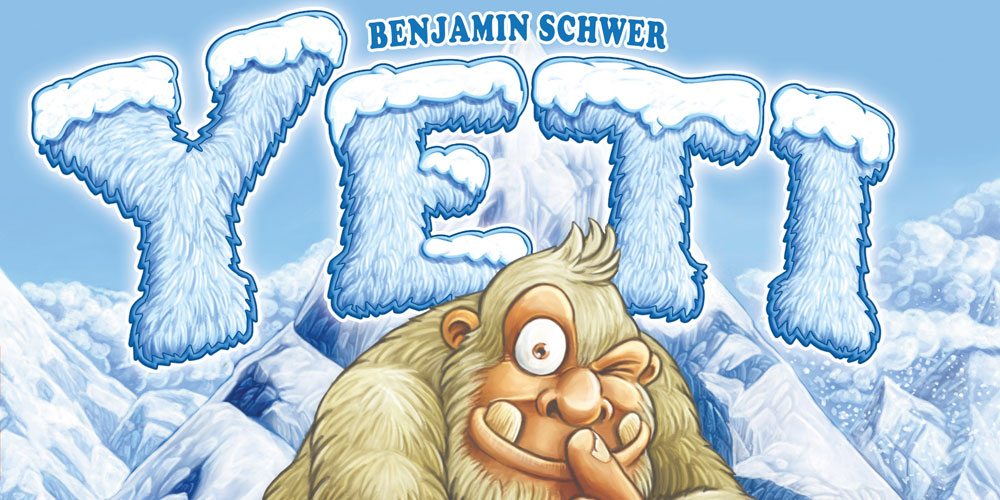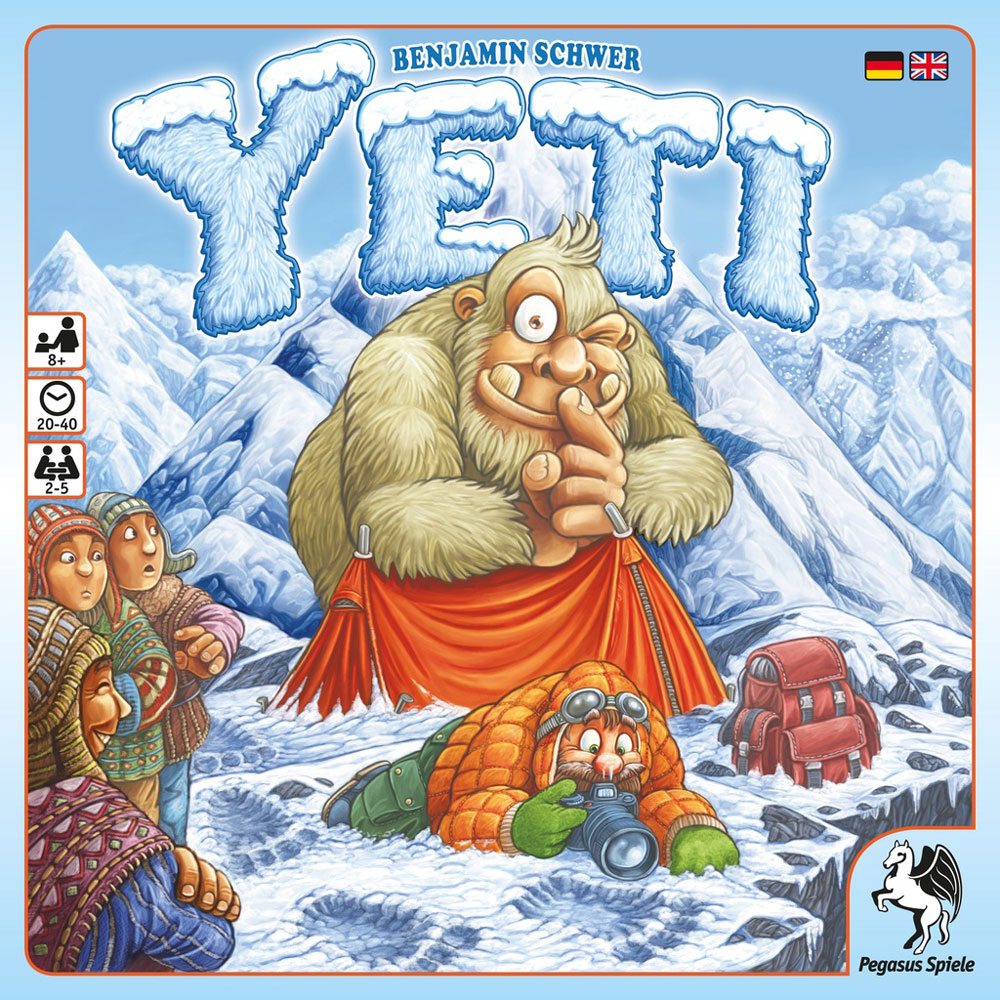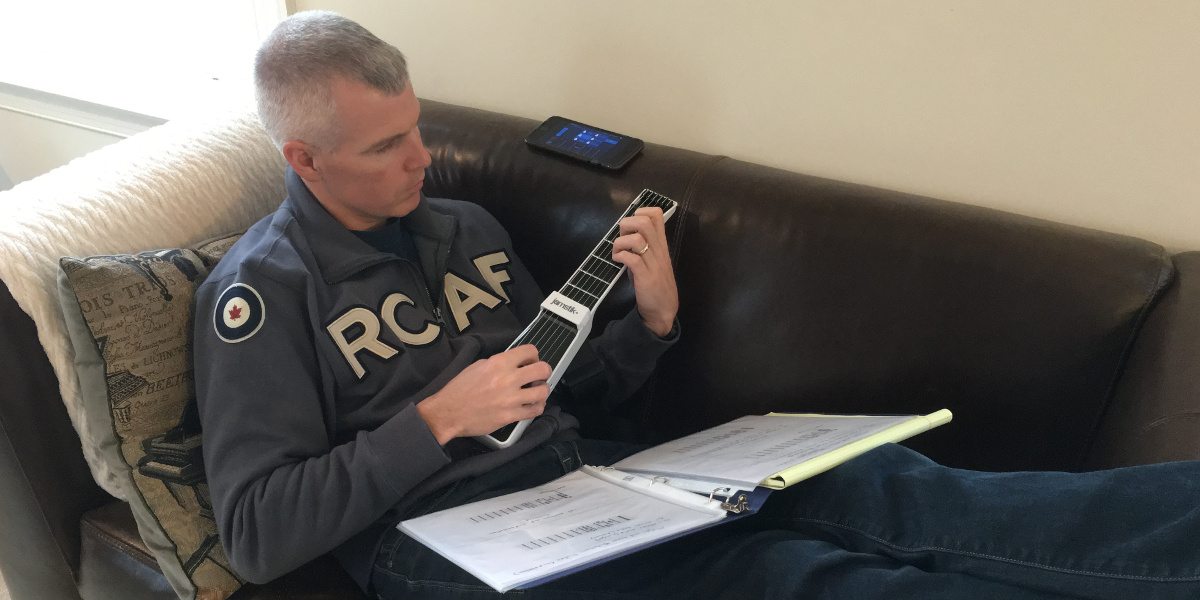The elusive Yeti is hiding somewhere in the Himalayas, and adventurers climb the mountains in the hopes of finding its footprints or—better yet—capturing it on camera. Watch out for blizzards, which will make the journey more difficult for everyone, and don’t underestimate the value of a nice tent.
At a glance: Yeti is a game by Benjamin Schwer for 2 to 5 players, ages 14 and up, and takes about 20–40 minutes to play. It retails for $29.99 and is in stores now and online. Although the box says 14 and up, I think the game could be played by kids quite a bit younger, particularly if they have somebody teach them the rules first—maybe 8 and up if playing with adult help. There’s nothing content-wise that’s inappropriate for younger kids.
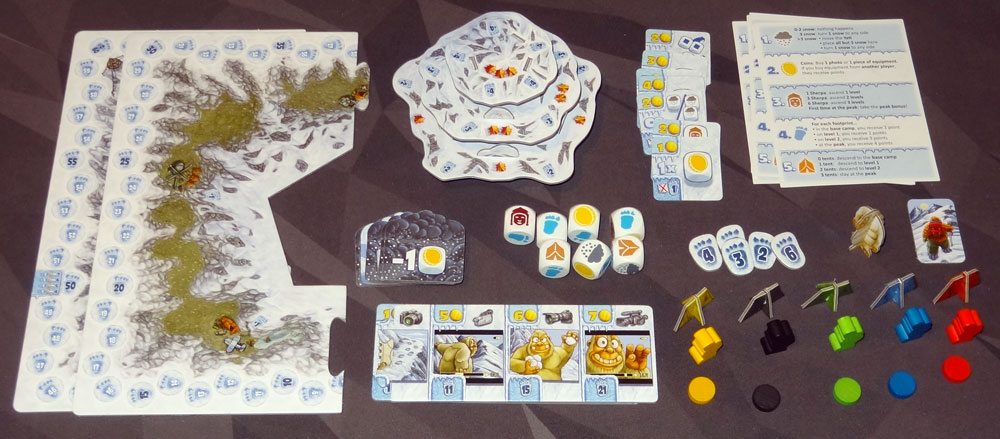
Components
- 1 two-part game board
- 1 Mountain
- 5 Peak tiles
- 1 Yeti token
- 5 Base Camp tokens
- 6 Weather tiles (for variant rules)
- 1 Starting Player tile
- 7 custom dice
- 5 Mountaineer meeples
- 5 Point markers
- 7 Equipment tiles
- 1 two-part Photo Track
- 5 reference sheets
The board and mountain are certainly the most eye-catching part of this game: the mountain has three tiers of decreasing size that are supported by some cardboard rings. Before you play, you’ll have to punch, fold, and assemble the mountain. I found that the cardboard for this wasn’t great quality—when folding the cardboard strips to form the rings, some of them started peeling apart. I ended up using a bit of glue when assembling it to ensure that it doesn’t fall apart. Fortunately, the assembled mountain still fits in the box just fine.
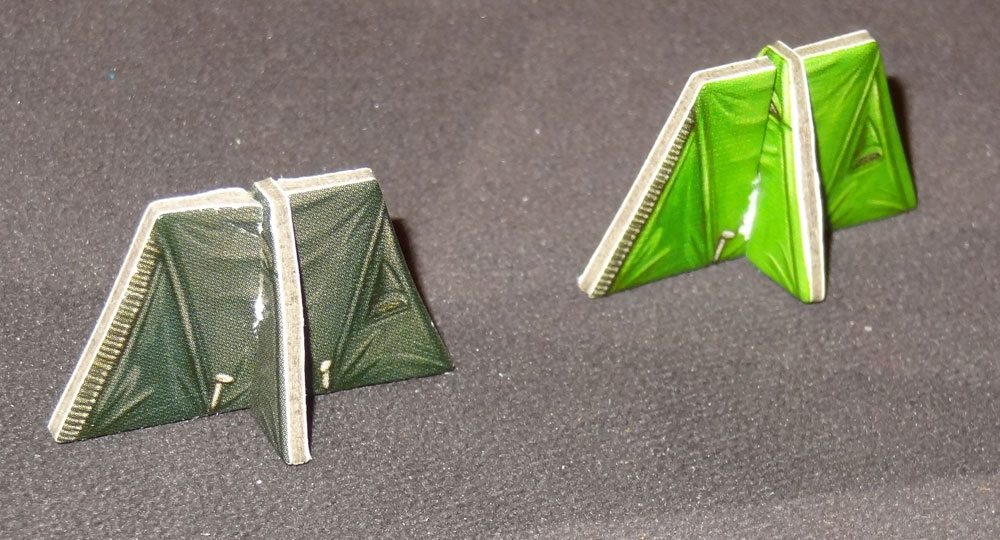
The Yeti and Base Camp tokens are two-piece cardboard tokens: again, punch them out and then fit the slots together to create a 3D piece. Here, I was also a little disappointed in the quality of the cardboard and the tolerances for the die-cuts. A few of the notches on the tent shapes were so tight that it was stripping the printed surface of the cardboard while I was assembling them, and another one was so loose that I needed some glue to hold it together. One odd feature of the Yeti is that the arms/shoulders piece has the same illustrated printed on the front and back, so that the backs of the Yeti’s feet also have toes.
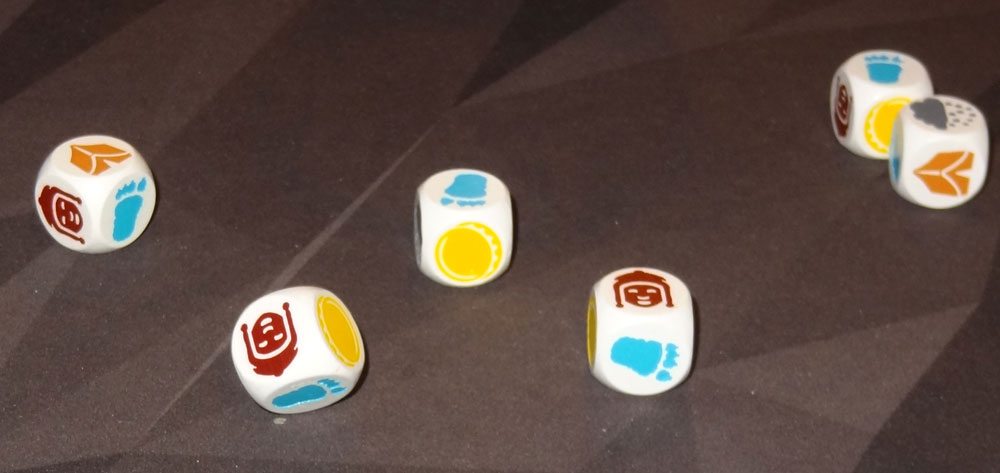
The rest of the components aren’t bad: the other cardboard pieces don’t have notches or tabs and seem fine, and the mountaineer meeples are cute, looking like bundled-up people with backpacks. The dice are wooden with rounded corners and silkscreened images.
The artwork on the photo track is fun: it represents the various types of equipment you can buy and the associated image of the Yeti that you capture. For instance, for 1 coin all you get is a notepad and pen, so your “picture” of a Yeti is just a drawing. But if you spend more money, you might get a cell phone photo, or a close-up shot with a DSLR and a telephoto lens, or even a hi-def movie clip.

The box itself is rather large for the game contained, with a lot of extra space.
How to Play
The goal of the game is to score the most points by the end of the game, which occurs after somebody moves their point tracker past the Yeti on the score track.
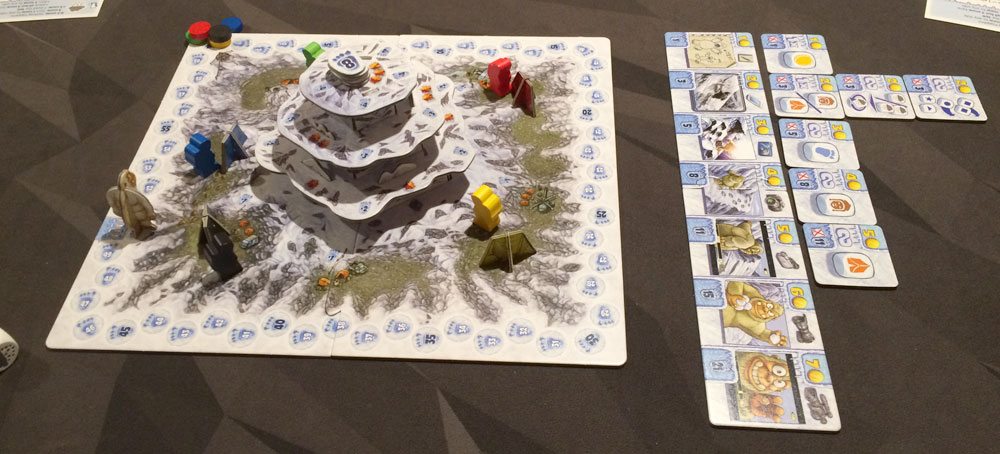
To set up, put the board and the mountain in the center of the table. Each player takes a mountaineer, base camp, and point tracker of the same color. The point tracker is placed on the “0” space, and the base camp is placed anywhere on the board near the mountain. (The board doesn’t have any spaces—it’s only important to know what level you are on.)
The Yeti starts at space “50” on the scoring track. Set the photo track and equipment tiles to one side, and pick a player to go first, giving them the Starting Player tile and the dice. (The weather tiles are used for variant rules, which I’ll explain later.) Place the peak tiles on the top of the mountain, with the highest value on top.
On your turn, you roll all of the available dice. Each time you roll, you must set aside all of the dice of exactly one type. If you rolled any snow, you must set aside all of the snow dice, but you may optionally choose another type to set aside as well. After setting aside the dice, you re-roll all the rest of the remaining dice, repeating this process until all dice have been set aside.
Then, you evaluate the dice in this order: Snow, Coins, Sherpas, Footprints, Tents.
Snow: If you rolled fewer than 3 snow, nothing happens. If you rolled 3 snow, you turn one of the snow dice to a face of your choice. If you rolled more than 3 snow, a blizzard occurs:
- Advance the Yeti—it moves a number of spaces depending on the number of players, but will never pass a player on the scoring track.
- Place any snow dice in excess of 3 on your reference sheet—they will stay there until your next turn, at which point you will roll them with the rest of the dice passed to you.
- You may change 1 of the remaining 3 snow dice to a face of your choice.

Coins: You may spend coins to purchase 1 item, either an equipment tile or a photo. If you choose a photo, you immediately get the point value shown below the photo (and you don’t take the photo track—it’s just an indication of the cost for various point levels). If you choose an equipment tile, take it and place it in front of you. Note: if you choose an equipment tile belonging to another player, take it, and the player scores the points shown on the equipment tile immediately.
Sherpas: Sherpas let you climb the mountain:
- 1 Sherpa moves you up 1 level
- 3 Sherpas move you up 2 levels
- 6 Sherpas move you up 3 levels
Note: the first time you get to the top of the mountain, take the top peak tile there and score points immediately. Then place the peak tile next to your base camp token to indicate that you have already scored for reaching the summit.
Footprints: You score points for each footprint you rolled. The higher you are on the mountain, the more points each footprint is worth.
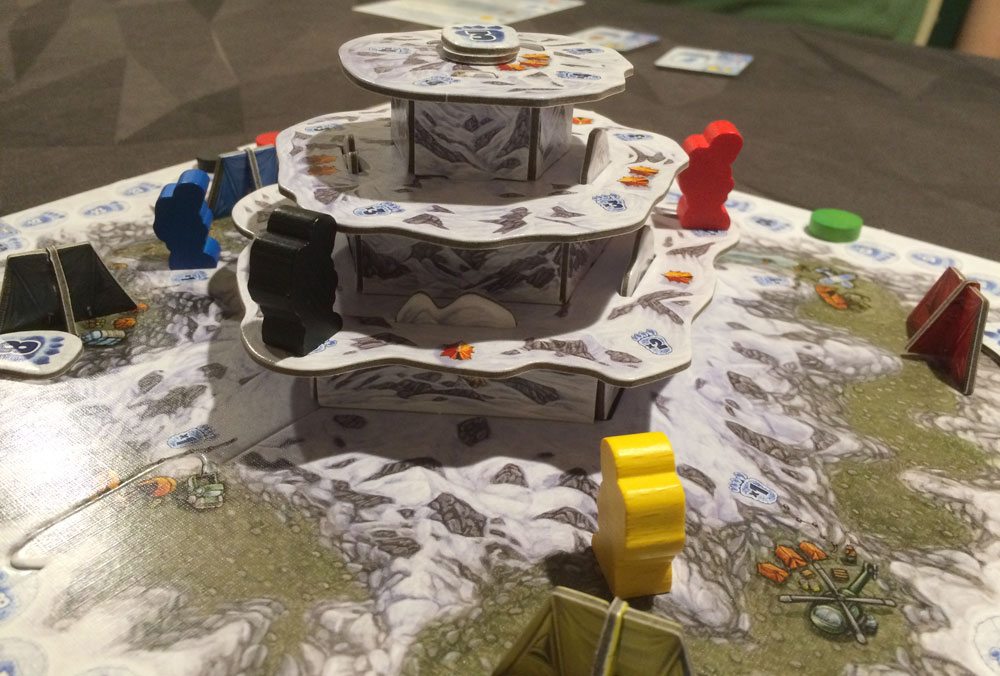
Tents: Tents let you stay at higher levels at the end of your turn. If you have no tents, you must return all the way to base camp at the end of your turn. If you have 1 tent, you may stay on level 1, and so on. However, you may not use tents to ascend to a higher level if you’re not already there.
Once your turn is over, pass the dice to the next player.
The game ends when any player’s scoring track catches up to the Yeti or passes it. Finish the round so that all players have had the same number of turns, and then the player with the most points wins. In case of a tie, the player with the highest total equipment value wins.
Some of the equipment tiles are one-time-use and are returned to the supply as soon as you use them, and some may be used every turn. Here’s what they do:
- Coin: You get 1 additional coin (one time).
- Tent/Sherpa: You get 1 additional tent or sherpa (one time).
- Two types: You may set aside 2 types of dice instead of just 1 after each roll.
- Reroll snow: After you’re done rolling, if you have 1 or 2 snow, you may reroll one of them.
- Footprint: You receive 1 additional footprint each turn.
- Sherpa: You receive 1 additional sherpa each turn.
- Tent: You receive 1 additional tent each turn.

You may also play with the weather tiles. Each tile has a good weather side and a bad weather side. During setup, turn any 3 tiles to the bad weather side, and then shuffle the tiles in a stack and place them near the starting player. At the beginning of the starting player’s turn, they flip the top weather tile over and put it on the bottom of the stack, and the next weather tile shown will be in effect for the entire round. Weather tiles have various effects: bad weather may subtract a coin, footprint, or sherpa from your roll, or cause you to receive fewer points when somebody buys an equipment tile from you, and so on. Good weather might give you points for rolling snow, or extra points for taking particular actions like buying an equipment tile or buying a photo.
The Verdict
Yeti is a cute spin on Yahtzee-style dice games: you need certain combinations of dice to win, but there is some flexibility in how you go about it, and there are some new aspects, like the way that the blizzards affect everyone and not just the player who rolled them. The game is family-friendly, and since it’s a dice game there is certainly a lot of luck involved. There are some ways to mitigate the random chance, but sometimes a bad roll is just a bad roll and there’s not much you can do about it.
The two immediate ways to score points are finding footprints and getting pictures of the Yeti. Finding footprints is more effective the higher you are on the mountain, but getting to the top and finding footprints can be a tricky business: first, you’ll need sherpas to climb, and then additional dice with footprints to score points—the more you climb in a single turn, the fewer dice you have left for footprints. But if you use fewer sherpas and some tents, you’ll be at a better starting point on your next turn, potentially using fewer sherpas and having more dice left for footprints.
Or, you can just try to get coins to get pictures of the Yeti without all that fuss of climbing and descending. The trick, though, is that there’s only 1 coin per die. (Each die has 2 footprints and 1 of everything else.) If you manage to get 7 coins in one turn, that’s a whopping 21 points for the Yeti picture, but it’s a pretty rare occasion. There’s a lot more equipment that helps you climb the mountain than get coins.
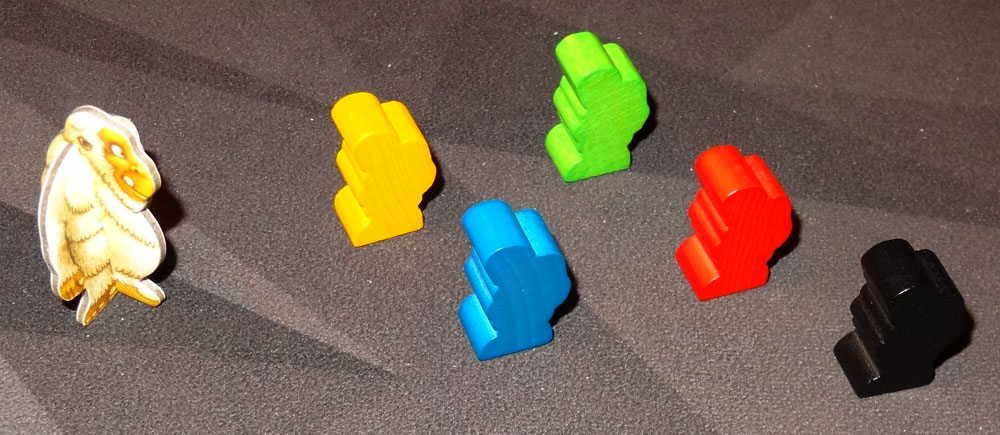
There are two other potential avenues for points, too: buying equipment and reaching the summit. Since you score points when somebody buys your equipment tile—and it’s the same score as the equivalent cost Yeti picture—sometimes if you have the coins, you may be better off getting the equipment, especially the ones that you can use multiple times. They’ll give you an ongoing benefit, and if somebody else buys it from you, you’ll score the points you would have gotten for the Yeti picture. It gives people a tough choice to make—buying equipment from somebody gives them points, but not buying it lets them continue gaining the benefit of the equipment. In some cases, that can be a huge bonus.
Finally, you can also score points by reaching the summit, and the sooner you do that, the more points you’ll get—so there’s a bit of a race aspect. But once the highest scores are taken, there’s a little less of a rush to be next.
The blizzard effect is interesting, because it can potentially take several dice out of circulation, making it harder to accomplish anything. It also advances the Yeti, thus prolonging the game. In most games I’ve played so far we’ve had a few blizzards but not too many, and so far I’ve only seen 4-dice blizzards, which means 1 die is pulled. (Though we did have consecutive 4-dice blizzards, so more than one die was out at a time.) Since the effects of a blizzard last an entire round, you never want anyone to “bust” entirely, which gives the game the tiniest bit of a cooperative feel, when everyone is rooting for something other than snow.
The gameplay is fairly simple, and I recommend using the weather tiles just to add a little more variety to the turns. They aren’t too difficult to use, and they give each round a slightly different feel, as well as giving you a nudge in a particular direction. For instance, if it’s bad weather that subtracts 1 sherpa from your roll, then you probably won’t bother trying to climb as much and can focus on getting equipment.
The mountain itself is fun to look at and gets a lot of attention when I pull it out of the box, even if it is a little gimmicky. Essentially there are four different tiers of the mountain, so you could play this game with just a flat board with a mountain illustration printed on it. But climbing up and down the 3D mountain does give a nice thematic feel, particularly when you’re the first to reach the top. I feel like there should be a little flag that you get to plant at the top of the mountain when that happens.
Overall, I’d recommend Yeti for players who enjoy dice-rolling with just a little bit of press-your-luck. It’s not a very deep game, but it’s not meant to be. Families will have fun competing to catch the Yeti before he hides himself away in the blizzard.
Disclosure: I received a review copy of this game.
